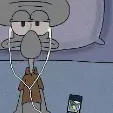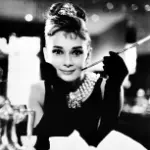"All Quiet on the Western Front" not only clinched a nomination for Best Picture at the 2023 Oscars but emerged as a nominee powerhouse in aesthetic categories like Best Production Design, Visual Effects, Cinematography, and Makeup and styling. It meticulously recreates the grim reality of the Western Front during World War I through the lens of German soldiers, delivering a vivid portrayal of the war's deception, absurdity, filth, and brutality.

Originally serialized 1928 in "Vossische Zeitung," this epic novel by German author Erich Maria Remarque, titled "Im Westen nichts Neues" in German, later became a standalone book comprising twelve chapters. Before the 2022 film adaptation, there were two cinematic renditions. The 1930 American version, "All Quiet on the Western Front," etched its name in cinematic history, influencing the creative direction of many subsequent anti-war films. The 2022 rendition, while rooted in the novel, introduces substantial modifications, utilizing cutting-edge film techniques for a more immersive dive into history.

Despite a straightforward narrative, the film's depiction of battlefield details and individual destinies resonated profoundly at its release. Protagonist Paul Bäumer and his comrades, initially spirited and naive German youth fueled by the incitement of their principal and chauvinism, rebelliously and zealously venture to the German-French border on the Western Front.

Over four years of war, Paul witnesses the tragic departure of his comrades and undergoes substantial mental and physical torment. The battlefield isn't a canvas of patriotic fervor but a landscape strewn with fragmented bodies, muddy trenches, and brutal, desensitized conflicts. Eventually, Germany and France reached a peace accord. Yet, the irony prevails—Paul sacrifices himself in the final second before the agreed time, leaving only queries and interrogations for the instigators of war.


Beyond its portrayal of the battlefield, the film invests significantly in cinematography aesthetics. Particularly noteworthy are the freeze-frame outdoor shots at the beginning, transitioning to a landscape blanketed with snow-covered corpses, vividly accentuating the stark realism of the chilling and desolate surroundings. The film deliberately sidesteps the perspective of victors, aiming to convey Paul's frustrations and tribulations directly. "It's not just about seeing the set; you need to make the audience smell it," the art director steadfastly upholds a creative philosophy.
The film's focal point is the trench known as the "no man's land," where each charge, evasion, and assault unfolds through interactions among characters in the trenches, expressing the hypocrisy, numbness, cowardice, and helplessness inherent in human nature. The shooting location for this 'no man's land' is a colossal, abandoned Soviet-era airbase in the Czech Republic, meticulously transformed under the oversight of Art Director Christian Goldbeck.

The art team meticulously measured trench lengths bends, intersections, shelters, and crevices confirming the trench's location and set design before filming commenced. This labyrinth, akin to a puzzle, was assembled scene by scene, with each corner maximized for its contribution to the visual narrative.

The film's low saturation and precise layering and detailing distinguish it. Despite the argument that war films are confined to a uniform military color palette, critical adornments and hairstyles swiftly allow the identification of characters like Paul and his comrades.

The styling team prepared a series of uniforms for the main characters and key supporting roles, each reflecting different stages of decay. Initially pristine and innocent, the uniforms undergo wear and tear after the baptism of the battlefield, acquiring mud after local fortifications collapse. Makeup and textile artists spent weeks tearing apart hundreds of costumes to simulate genuine textures. Winter scenes demanded special attention to details like icy collars, conveying a biting coldness.

Given the dominance of khaki and green in the German military's color scheme, handling other colors demanded more variation and creativity. For instance, the color of blood varies, appearing darker during forensic scenes and brighter in intense combat moments.

One memorable scene involves a French armored vehicle, marked by a conspicuous yellow hue, advancing through thick fog towards the Germans. While the yellow fog might deviate from reality, it adds a terrifying and intense atmosphere, injecting vibrancy into the nearly monochromatic color sequence.
Scenes where Paul and his peers eagerly listen to enlistment speeches are set in a structure resembling an academic building, shot in an art gallery in Prague's city center, boasting a breathtaking ceiling decoration. This unique setting starkly contrasts with other scenes in the film. To illuminate the gallery's colorful ceiling, the lighting team pasted inflatable bulbs between it and the upper roof, inflating them to attain continuous lighting.


This scene captures the enthusiasm of Paul and dozens of young recruits during their enlistment, radiating optimism and excitement. The diverse lighting complements colorful costumes and skin tones, conveying innocence beneath the deception. The film is punctuated by numerous visually stunning shots, especially the forests and ruins illuminated by the flames of signal flares, revealing a beauty beneath the danger and emptiness. "All Quiet on the Western Front" is a testament to brutal aesthetics, a visceral exploration of war's horrors translated into a visually poignant experience. Its commitment to realism, from meticulously recreated trenches to detailed costuming, cements its place as a powerful narrative in the anti-war film genre.

















































Share your thoughts!
Be the first to start the conversation.